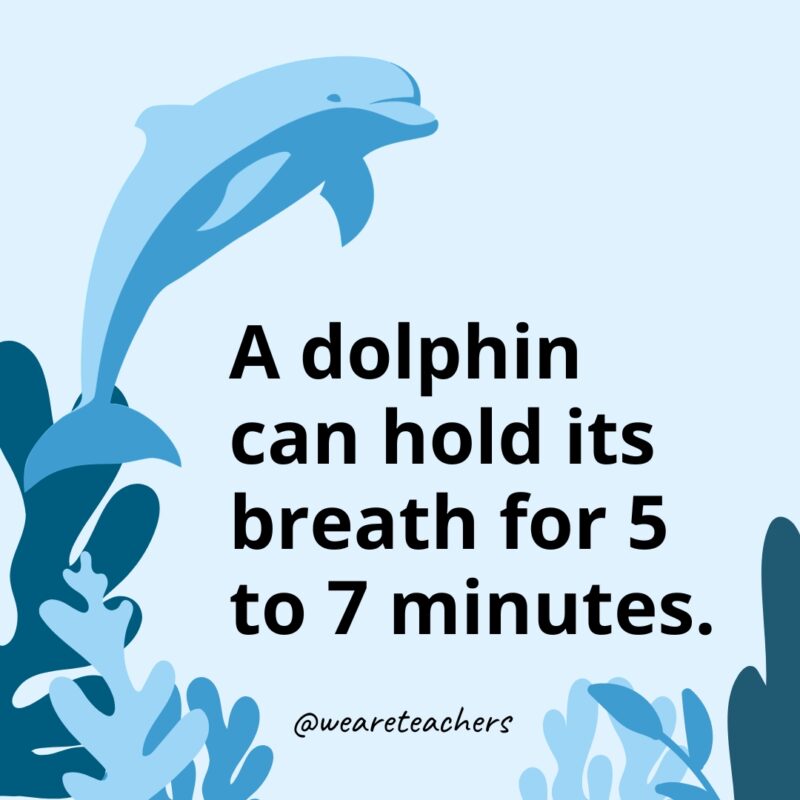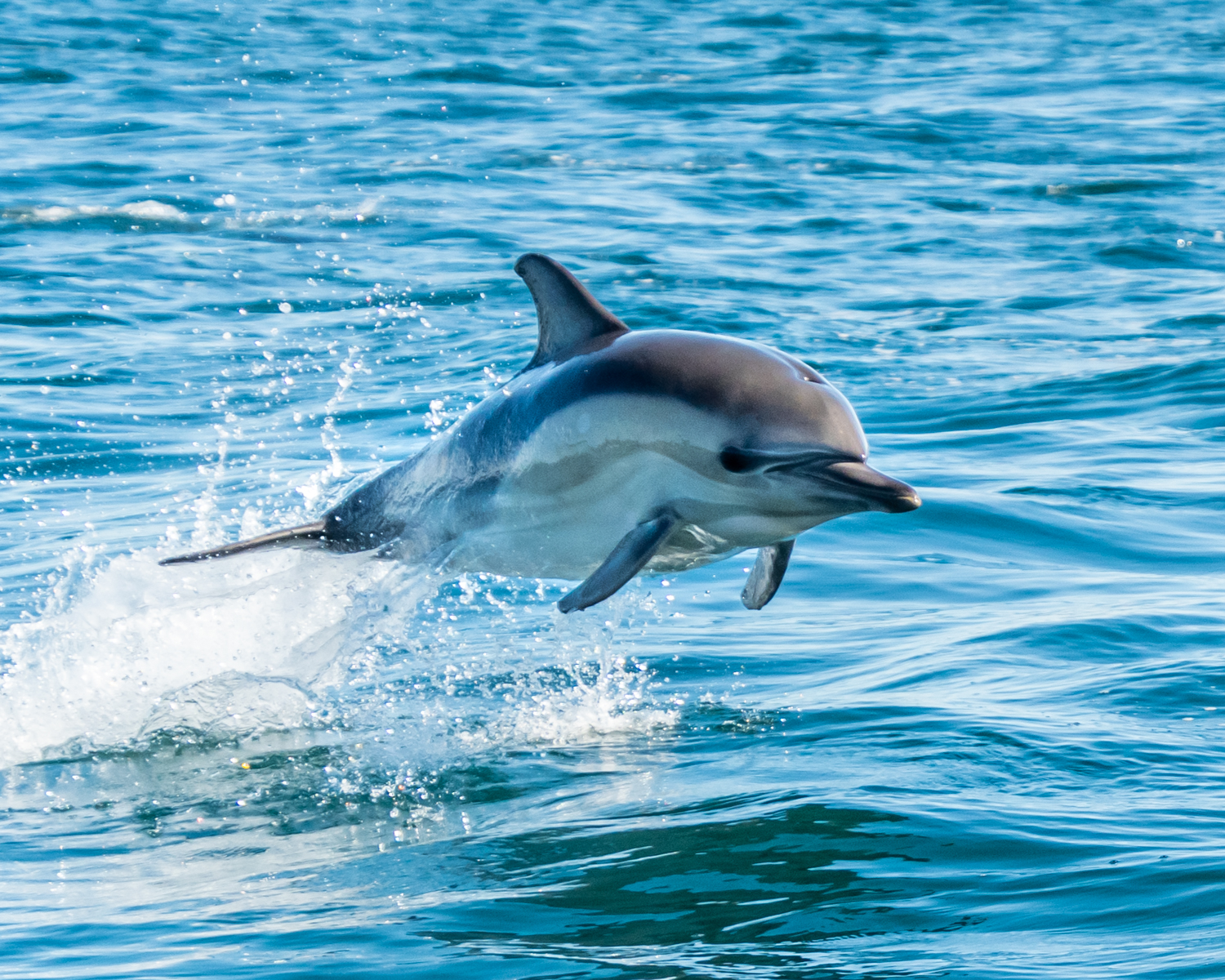Learn How Dolphin Facts Reveal Their One-of-a-kind Social Structures
Learn How Dolphin Facts Reveal Their One-of-a-kind Social Structures
Blog Article
Dive Into the Ocean: Exciting Dolphin Truths for Sea Lovers
The globe of dolphins provides a remarkable junction of intelligence, social habits, and eco-friendly significance. With about 37 varieties, these marine animals show a variety of amazing characteristics that not just mesmerize ocean lovers however also emphasize their vital duty in marine communities. From their intricate communication approaches to their outstanding analytical capacities, dolphins test our understanding of pet intelligence. The pushing demand for conservation efforts to shield these creatures and their habitats raises important concerns about our obligation in the direction of the sea's citizens. What effects do these factors hold for our interactions with these remarkable beings?
Dolphin Variety Diversity
Variety is a characteristic of the dolphin family, encompassing a variety of types that exhibit unique physical features, actions, and habitats. The household Delphinidae, typically called oceanic dolphins, consists of about 37 species, each adjusted to details eco-friendly niches. The bottlenose dolphin (Tursiops truncatus) is renowned for its knowledge and flexibility, thriving in both seaside and open ocean atmospheres.
On the other hand, the whale (Orcinus whale), usually described as the killer whale, is the biggest participant of the dolphin family members and is characterized by its striking black-and-white pigmentation. Orcas demonstrate complex social structures and searching strategies, showcasing the behavior variety within the family members. Other species, such as the spinner dolphin (Stenella longirostris), are kept in mind for their acrobatic display screens and preference for warmer waters, highlighting the adaptability of dolphins to numerous marine ecological communities.
Furthermore, river dolphins, including the pink river dolphin (Inia geoffrensis), occupy freshwater settings, additionally illustrating the comprehensive environments that dolphins occupy. Dolphin Facts. This amazing variety not only enhances marine ecological communities but also highlights the importance of conservation efforts to safeguard these impressive animals and their settings
Social Habits and Communication
The intricate social habits and interaction techniques of dolphins are important parts of their presence, promoting team cohesion and boosting survival. These extremely smart aquatic creatures display complicated social frameworks, frequently forming vessels that can range from a couple of individuals to over a hundred. Within these groups, dolphins take part in actions such as participating hunting, social play, and shared security, which cultivate solid bonds amongst members.
Dolphins make use of a sophisticated range of articulations, including clicks, whistles, and body language, to communicate information and express emotions. Their signature whistles act as one-of-a-kind identifiers, akin to names, enabling individuals to call out to one an additional. This vocal communication is enhanced by non-verbal signals, such as jumping, slapping the water, and synchronized swimming, which even more boosts their communications.

Special Feeding Practices
Special feeding behaviors define dolphins, showcasing their flexibility and intelligence in different aquatic settings. These aquatic mammals are known for their varied diet regimens, which mainly consist of fish, squid, and crustaceans. Their hunting methods can vary substantially, frequently customized to the specific target and ecological problems.
One significant approach is cooperative hunting, where dolphins operate in teams to herd schools of fish right into tight formations, making it less complicated for individuals to capture their meal. This social actions not just boosts their feeding performance yet likewise enhances social bonds within the capsule. Additionally, dolphins have been observed utilizing a method called "fish-whacking," where they use their tails to confuse or stun fish, facilitating much easier capture.
An additional fascinating feeding routine is echolocation, which permits dolphins to discover prey also in murky waters. By releasing sound waves and translating the returning echoes, they can recognize the dimension, shape, and location of their targets. This exceptional ability underscores their versatility in numerous habitats, from superficial seaside locations to deeper nautical waters. Overall, the distinct feeding routines of more dolphins highlight their role as proficient predators within the marine ecosystem, demonstrating both intelligence and resourcefulness.
Intelligence and Trouble Addressing
Dolphins exhibit impressive cognitive capabilities that expand past their sophisticated feeding techniques. Their intelligence appears in their analytical abilities, social interactions, and ability for understanding. Research has demonstrated that dolphins can use devices, such as using aquatic sponges to safeguard their rostrums while foraging on the seafloor. This habits highlights their ability to adjust their environment successfully and adjust techniques to enhance survival.
Additionally, dolphins display innovative interaction skills, utilizing a complicated system of clicks, whistles, and body language. Dolphin Facts. This communication is crucial for collaborating group tasks, such as searching and socializing, illustrating their capacity to work jointly towards a typical goal. Their ability to understand abstract ideas, consisting of self-recognition in mirrors, even more emphasizes their cognitive sophistication
In regulated researches, dolphins have revealed an ability to solve puzzles and perform jobs that need both memory and crucial thinking. These communications show not just knowledge however likewise a determination to engage with their environment in novel means. Generally, the cognitive expertise of dolphins places them among the most smart varieties on the planet, promoting a deeper recognition for their function in marine ecosystems.
Preservation and Environmental Effect
Preservation efforts targeted at shielding aquatic communities are vital for preserving dolphin populaces and their environments. Dolphins are extremely delicate to ecological modifications, and their survival is delicately linked to the health and wellness of nautical ecological communities. Overfishing, contamination, and climate change pose substantial dangers to both dolphins and their settings.
Overfishing interferes with the food cycle, causing a decline in prey varieties vital for dolphin survival. Furthermore, contaminants such as plastics and chemicals build up in aquatic environments, jeopardizing dolphins via intake and bioaccumulation. Increased water temperatures and ocean acidification, repercussions of climate modification, even more threaten the delicate balance of marine communities, impacting dolphin breeding and migratory patterns.
By focusing on preservation initiatives, we can make certain that future generations delight in the beauty and vigor of dolphins and the seas they live in. Safeguarding marine ecosystems is not just concerning saving dolphins; like it it is regarding protecting the elaborate web of life that sustains us all.
Final Thought
Dolphins exhibit the complexity and richness of aquatic life through their varied types, intricate social frameworks, and progressed cognitive abilities. As important elements of aquatic ecosystems, dolphins highlight the need of continuous conservation efforts to guard their habitats.
Other varieties, such as the rewriter dolphin (Stenella longirostris), are kept in mind for their acrobatic screens and choice for warmer waters, you could look here highlighting the adaptability of dolphins to different marine ecological communities.
Overall, the unique feeding routines of dolphins highlight their duty as proficient predators within the marine ecological community, showing both intelligence and ingenuity.
Generally, the cognitive prowess of dolphins puts them amongst the most smart species on the planet, fostering a deeper appreciation for their duty in marine communities.

Report this page